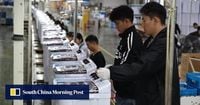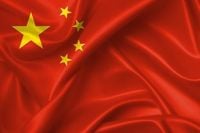China’s manufacturing sector has now recorded its seventh straight month of contraction, with the official Purchasing Managers’ Index (PMI) dropping to 49.0 in October 2025 from 49.8 in September, according to data released by the National Bureau of Statistics. The figure, which missed economists’ expectations of 49.7, marks the lowest reading in six months and signals mounting pressure on the world’s second-largest economy. For context, any PMI reading below 50 indicates contraction, while a figure above 50 suggests expansion.
Behind the headline number, the details paint an even starker picture. The new orders sub-index—a key measure of demand—fell to 48.8 from 49.7, while the production sub-index dropped sharply to 49.7 from 51.9. This means both output and demand have cooled significantly, with October’s activity slowing more than anticipated. Chief statistician Huo Lihui attributed the weaker reading to the “early release of some demand before the National Day holiday” and a “more complex international environment,” as reported by the National Bureau of Statistics.
It’s not just the manufacturing sector feeling the pinch. The non-manufacturing PMI, which tracks the services and construction industries, edged up only slightly to 50.1 in October from 50.0 in September. While this technically signals marginal expansion, it fell short of forecasts and highlights the fragile nature of China’s broader recovery. The composite PMI, which combines manufacturing and services, slipped to 50.0 from 50.6, showing little overall momentum.
Economists say the latest figures confirm a loss of economic momentum that began around mid-2025. According to Reuters, persistent weakness in domestic demand and a sluggish property sector have weighed heavily on household spending and business confidence. Exporters, for their part, face intense price competition abroad, often selling at a loss in markets across Europe, Latin America, and Africa. “The property market downturn continues to weigh on domestic demand, and fiscal policy has not yet shifted meaningfully to counter the slowdown,” observed Zhang Zhiwei of Pinpoint Asset Management, speaking to The South China Morning Post.
Despite the gloom in the manufacturing sector, some economic indicators have shown glimmers of hope. Industrial output and corporate profits both grew in September, marking consecutive months of improvement. Notably, industrial profits surged by 21.6% in September—the strongest rise in nearly two years, as reported by the National Bureau of Statistics. Analysts caution, however, that these gains are largely driven by state-owned enterprises, while smaller private firms continue to struggle with thin margins and weak orders. This uneven recovery means that the broader economy remains vulnerable.
China’s GDP growth slowed to 4.8% in the third quarter of 2025, its weakest pace in a year. Although this keeps the country broadly on track to meet its full-year growth target of around 5%, the sustainability of this growth—especially if it remains so dependent on external demand and state-led investment—has come under scrutiny. According to TIL Creatives, the Communist Party pledged at a recent policy meeting to boost domestic consumption and strengthen the country’s industrial base. Yet, many analysts question whether these measures truly represent a break from Beijing’s traditional playbook of relying on government-led stimulus and infrastructure spending.
Trade tensions have added another layer of complexity. The manufacturing PMI first slipped into contraction territory in April 2025, coinciding with an escalation in China-US trade tensions. However, there was a glimmer of relief in late October when, following talks between Presidents Xi Jinping and Donald Trump in Busan, the United States announced a partial rollback of tariffs, and China suspended export curbs on rare earths for one year. While this diplomatic thaw may ease some immediate pressure, the underlying challenges remain substantial.
Calls for greater policy support have grown louder as the economic slowdown drags on. Zhang Liqun, a special analyst at the China Federation of Logistics and Purchasing, argued for “major strengthening of counter-cyclical policy and government investment in public goods to effectively expand demand, boost corporate orders, production, and investment, as well as raise employment and accelerate income growth and revive consumption, thereby quickly steadying and supporting the economic recovery.” Wen Tao, an analyst at the China Logistics Information Center, highlighted two main reasons for the slowdown: “uncertainty around international trade has affected demand and business expectations, making companies more cautious on production,” and seasonal factors such as the long National Day holiday had a dampening effect on activity.
Historically, October tends to see a dip in production compared to September, but this year’s drop was sharper than usual. The PMI was 49 in April 2025, 49.5 in May, 49.7 in June, 49.3 in July, and 49.4 in August, illustrating a persistent pattern of contraction. Procurement also fell to 49 in October from 51.6 the previous month, further underscoring the pervasive weakness across the sector.
Despite these headwinds, some officials remain cautiously optimistic. Wu We, an expert from the China Logistics Information Center, suggested that as fiscal and monetary policies “continue to work in tandem, policies aimed at stabilizing growth will become effective at a faster rate, and domestic demand momentum will be further strengthened.” He added that the fourth quarter should provide solid support for achieving China’s annual economic and social development goals.
Yet, the long-term outlook remains clouded by deeper structural issues. Household consumption in China remains about 20% below global averages as a share of GDP, which means the country’s growth model is still overly reliant on investment and exports rather than domestic spending. As Dan Wang of Eurasia Group put it, “The stimulus will be just enough to reach the full-year target, and to not make any indicators look too bad.”
In summary, China’s manufacturing sector is grappling with its longest slump in over nine years, battered by weak demand at home, fierce price competition abroad, and ongoing trade uncertainties. While policymakers have pledged to shore up domestic consumption and stabilize growth, the road ahead looks challenging. The coming months will test whether Beijing’s familiar toolkit can deliver a more balanced and sustainable recovery—or if deeper reforms will be needed to put the world’s second-largest economy back on a firmer footing.






